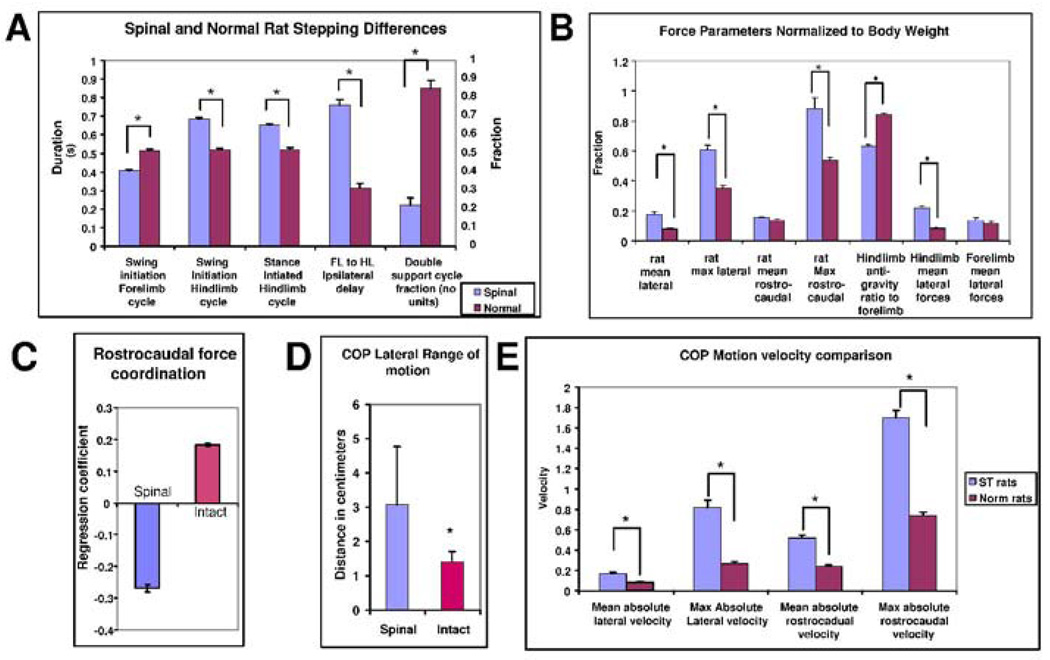Figure 12.
Summary statistical comparisons of Gait parameters, Ground reaction forces and Center of pressure motion between spinalized and intact rats. Asterisks indicate significant differences of p<0.05. A. Gait parameters: Cycle durations measured from swing initiation and stance initiation were examined for forelimbs (FL) and hindlimbs (HL). All parameters shown differed significantly (t-tests, p<0.05). ST rats had shorter forelimb cycles, longer hindlimb cycles, and very much longer ipsilateral forelimb to hindlimb delays. Whereas in trot intact rats spent about 80% of time in measured steps in double leg support, in spinal rats only 20% of the time or less was double support. Most of the time three or more legs were on the ground. B: Force comparisons: Absolute forces were compared across rats after conversion to fractions of body weight. The mean and maximum ground reaction forces in the lateral directions differed significantly between groups (t-tests p<0.05). The mean rostrocaudal force did not, but the maximum in ST rats was significantly larger. The last three comparisons in B examine two force plate measures. The ratio of HL vertical load to FL vertical load is shown. ST rats carried significantly less weight on the hindlimbs (60% of forelimb load) than intact (80% of forelimb load, t-test, p<0.05). Mean hindlimb lateral forces differed significantly between intact and ST rats, but forelimb forces did not. C: In transitions, rostrocaudal forces were significant positively correlated in intact rats, and negatively in ST rats and these differences were highly significant (t-test p<10E-6). D. The CoP in ST rats showed a significantly larger range of motion (t-test, p<0.05). E: The larger range of CoP motion was reflected in statistically significant differences in its motion pattern. ST rats had significantly larger mean absolute lateral velocity, and maximum velocity (t test, p<0.05). The rostrocaudal velocity and maximum also differed and were larger in ST rats, although their rate of actual body progression on the runway was slower. The CoP velocity also showed significantly greater variance in both lateral and rostrocaudal directions (not shown). The CoP velocity varied more and was probably more poorly controlled perhaps as a result of the triple and quadruple limb support patterns and uncontrolled lumbar generated forces.

